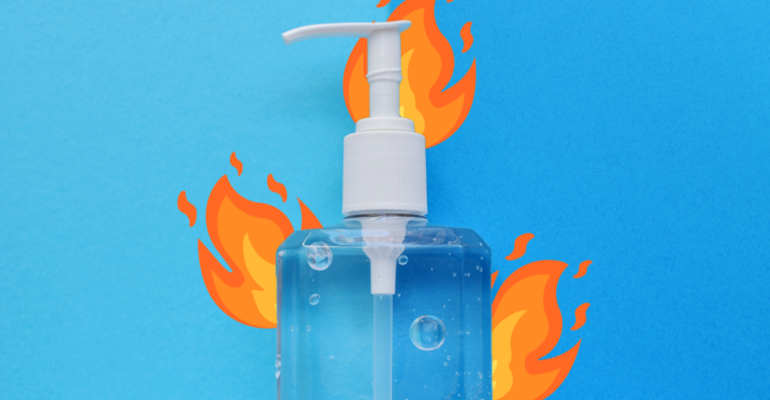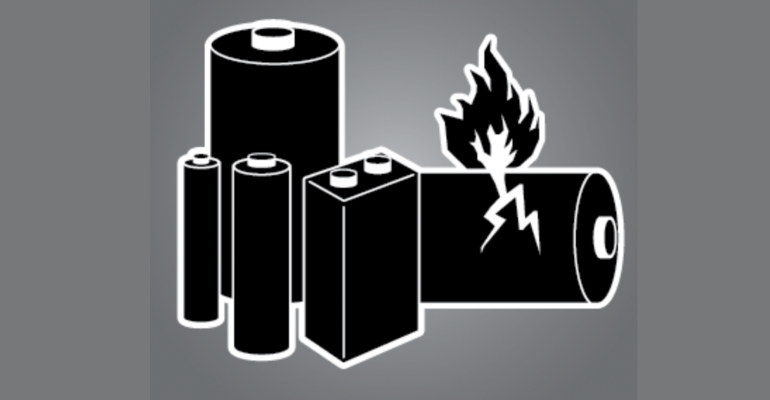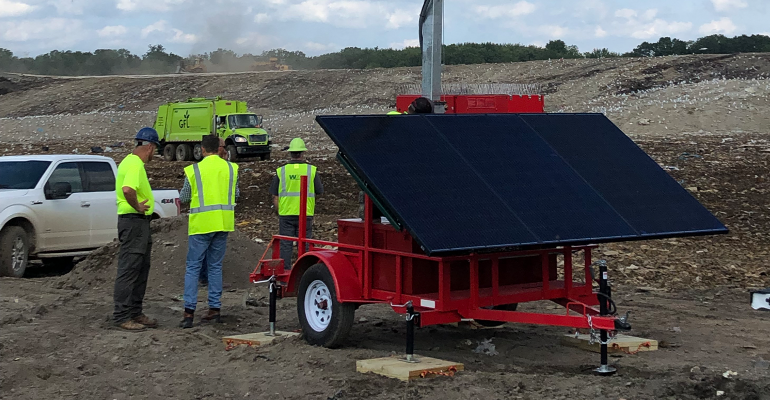
The waste and recycling industry continues to experience fire incidents that are in line with historical trends. Recognizing this problem, Fire Rover has released a new early detection, verification and dispatch solution and continues to track fire incident locations and causes to better understand how we can combat this growing problem.
In July, we encountered 37 reported fire incidents at our waste and recycling facilities in the U.S. and Canada. To put this into perspective, in March through July of last year, we only faced 132 total fires compared to this year’s same period of 194. This number far surpassed the average number of fires we have seen in the past five years including the start of the lithium-ion wave of 2018 where we incurred 190 fires during the same time. At Fire Rover, we responded to 88 fire incidents at our clients’ facilities to go along with the 74 from April, 88 from May, and 77 in June.
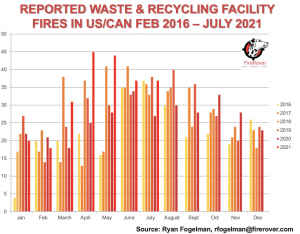
The fire incidents we have experienced during the past five months are clearly not an aberration. We are dealing with fundamental factors in the waste and recycling supply chain. To put this into historical perspective, I have updated the annual incident data to include 2021 numbers. The numbers are based on the trend for the first seven months of this year, but as you can see pretty clearly if things don’t change, we are facing the worst year for fires at our waste and recycling facilities since I began keeping records in 2016.
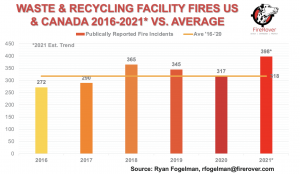
If you have read my recent articles, you know I have been doing my best to figure out why we are seeing a spike this year. What I’ve discovered thus far is we are experiencing similar and different factors this year as compared to years past, and the heat, dryness, addition of accelerants to our waste stream and increase of lithium-ion battery usage and disposal have all played a role in this year’s spike in fire incidents.
Let’s Talk Landfill Fires
This month, I am going to focus on landfill fires, a fire type that I haven’t spent much time discussing over the past few years.
Landfill fires are nothing like the fires that we see in transfer stations, scrap metal yards, construction and demolition facilities, materials recovery facilities and hazmat processing facilities. Landfill fires are typically deep-seated and mostly occur on the working face of the landfill.
For those unfamiliar with the term “working face,” it is the location in the landfill where garbage is dumped and covered with dirt or sand repeatedly in a pyramid or infill shape until the permitted amount of cubic feet is filled. The working face moves frequently around most landfills, making it difficult to protect from fire by traditional practices—until now. Yep, you guessed it! We have developed a new solution we call OnWatch powered by Fire Rover.
Traditionally, an after-hours landfill fire can burn unbeknownst until there is enough smoke in the sky to draw the attention of passerbys. When these fires are allowed to burn uncontested, a number of issues can occur. The most frightening damage is arguably to the landfill liners. The liners are tough and typically built to withstand a number of incidents; however, excessive fire, heat and water can put the integrity of the liner at risk. Anyone who works at a landfill will tell you that once the integrity of the liner is compromised, it becomes an expensive and monumental task to fix or replace.
The technology behind OnWatch corresponds with our Fire Rover philosophy: the earlier you detect a fire, the better the outcome. This theory holds true for all fire events but especially for landfills. The fact is that the quicker a fire is noticed at a landfill, the sooner the operator can simply cover and suffocate the fire with either dirt or sand—just as they would in the typical landfilling process.
So, what exactly is OnWatch? This mobile unit utilizes both solar and wind power to remotely monitor thermal cameras and detect abnormal heat signatures at the landfill. The system communicates via a 4G/5G cellular network and connects to the Fire Rover Monitoring Center for quick detection, identification and dispatch of emergency personnel. The OnWatch mobile unit is heavy-duty for harsh landfill environments, including dust, wind and uneven surfaces.
Check out this video of our newly installed unit at a landfill in the Midwest.
Not only does OnWatch work for landfills, but it can also be used for outdoor piles, construction projects, overflow tip floors, windrows, wildfires and more.
Conclusion
Fire Rover was developed by a team of inventors looking to solve a problem. The OnWatch, along with our other solutions that include thermal-only options, our boxless solution and our fire sprinkler replacement solution, are continuing to meet the needs of our clients. We protect more than 250 waste and recycling facilities in the U.S. and Canada and are expanding our offering to both the UK and Australia as we speak. We protect all types of recycling operations including scrap, waste, recycling, hazmat, lithium-ion processing, e-scrap, organics and construction and demolition. We have protected our clients from thousands of fire incidents with results that the insurance industry has noticed. With the industry’s continued support, we will continue our mission of creating real solutions to solve the unfortunate, but real, fire problems in our industry!

